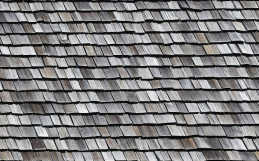New Roofing Materials
If you are building a new home, or have found yourself needing to choose new roofing material to replace your existing roof, there are a few things to know that can help make the process easier, and save you some time and money.
The “Square”
Before we get into roofing materials, let’s talk squares. Although the majority of conversations about dimensions in your home center around the term “square feet”, roofers use a different term and measurement. The “square” as they say is their basic unit of measure. This refers to a 100 square foot “square, which translates to a 10’ x 10’ area on your roof. As an example, a 2,000 square foot home with a standard gable will have less than 1,500 square feet of roofing area, or about 15 squares.
Cost
Many considerations come into the formula when we talk about roofing. If you are replacing the roof, there can be the cost of not only the roofing material (shingles, tiles, etc.), but also, the cost of replacing existing material under the roof can come into play. If the supporting structure under the roof is damaged or needs repair, this will add to the bill. Also, if the home has a basic gable without chimneys or other breaks in the plane of the roof, it will be a very straightforward project. However, if your roof has multiple chimneys, intersecting rooflines, skylights or other breaks in the normal plane, the roofing job will become more costly.
Materials
Asphalt shingles normally start at about $0.80-$1.00 per square foot. These are among the least expensive options in roofing material options. Architectural asphalt shingles are normally twice the cost of regular asphalt shingles and are twice as thick and heavy, so an additional underlayer may be required.
Metal roofing materials are considered a premium home product. The Metal Roofing Alliance states that metal roofing products normally cost about two to three times the cost of normal asphalt shingles. This cost estimate is equal to tile and cedar wood shakes, but is usually less than slate. Plan on paying between $3.50 and $11 per square foot for these options. And remember, adding the needed breathable underlayment material will add to the cost. This roofing product is joined together by soldering the joints to provide a solid seam.
Slate and cement tiles are most common on Spanish-style homes. According to the Durable Slate Company, which operates nationally, simple roofing projects cost approximately $15 per square foot, whereas complex and premium roofing designs with slate tiles can run up to $40 per square foot. The main drawback of slate and concrete roofing material is the weight. A standard slate or cement roof can weigh up to 1,500 pounds per 10’ X 10’ square for 3/8” tiles.
Wood shakes become wet in the winter months, and store moisture more than other types of roofing material. This moisture leads to warping over time, and is the main reason for shake repair and replacement on this type of roof. If you choose this option, make sure you purchase pressure-treated shakes for a longer life span, and less maintenance and warping.
Whatever roofing material you decide on, you’ll likely need to install flashing as well. Flashing is sold in either metal (aluminum, copper, etc.) or plastic. It’s used to join areas of your roofing that don’t connect with a solid seam. Good flashing is used to guarantee a watertight seam on your roof and support a long lasting roofing job.
If you have questions or want to find out more about your options when it comes to choosing the right roofing material, feel free to contact us here: www.warnerroofinginc.com








